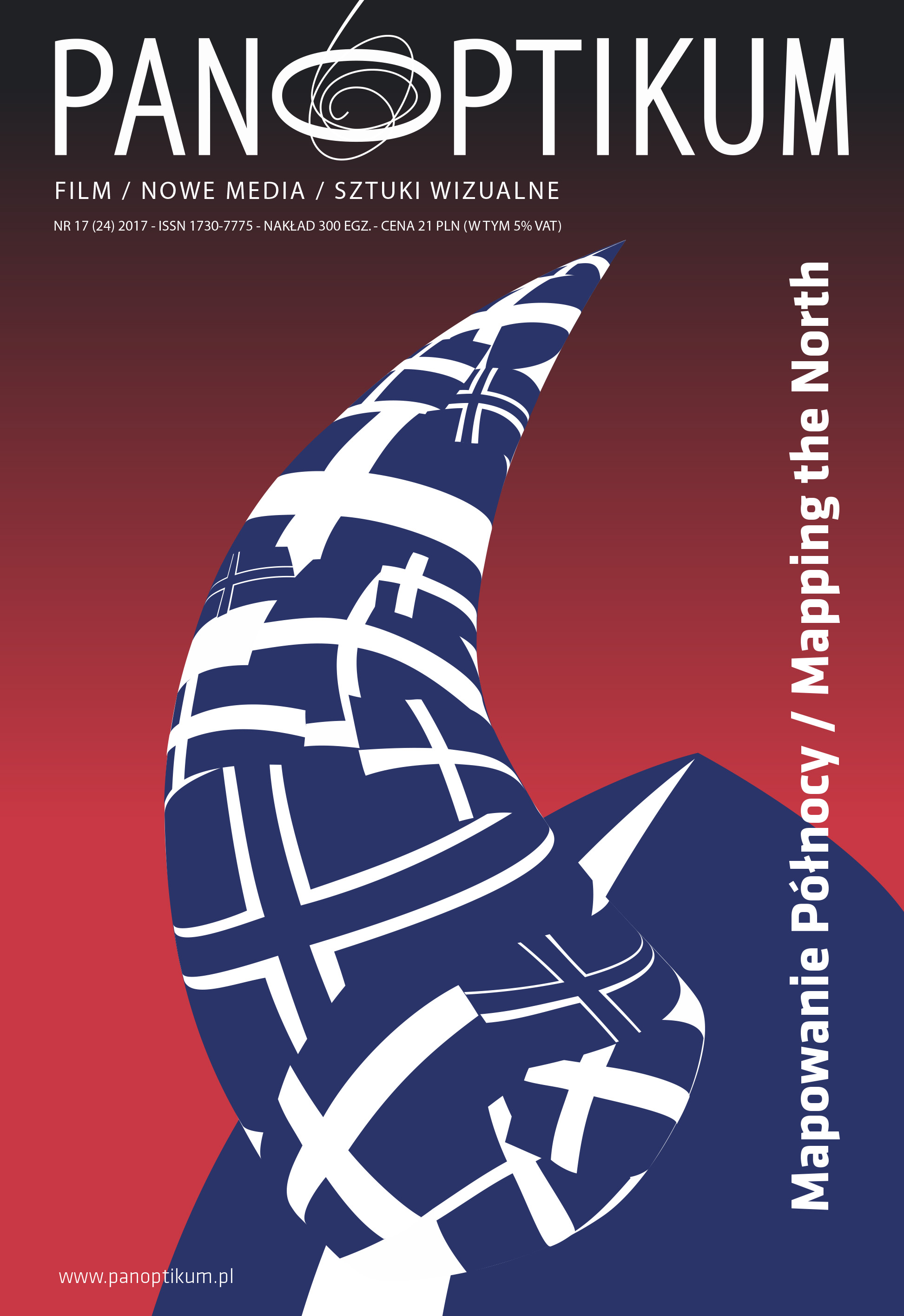Grenlandia i kinematografia – przedstawienia Grenlandczyków w filmie europejskim kontra grenlandzkie produkcje filmowe
Abstrakt
After having been a Danish colony since 1721, Greenland obtained Home Rule in 1979, extended in 2009, and since then it has set the course for a full independence. Despite the fact that Greenlandic independent film production does not have a long genealogy, Greenlanders have been a very keen object of film representations since the very beginning of the history of cinematography, at least in the Danish context. Drawing on the theory of representation within critical discourse analysis of a.o. Edward Said and Homi Bhabha, the article presents an analysis of representations of Greenland in the European cinematography (with a special focus on Danish film productions) as well as the Greenlandic self-representations in the independent Greenlandic film productions. While Greenlanders in the early European films were primarily construed as less civilised, childlike and therefore needing to be protected and educated in order to reach a higher level of cultural and technical development, with the indigenous movements in the ’70s and the Greenlandic fight for home rule, they began to be represented as victims of the Danish colonization and its post-war policy of accelerated modernization. Contrary to those images, Greenland’s own film productions mostly focus on radically different issues mostly concerned with youth urban identities and local attachment rather than the colonial past and its aftermath.
Downloads
Bibliografia
Barclay, B. (2003). Celebrating Fourth Cinema. „Illusions”, no. 35, s. 7-11.
Bhabha, H. (2010). Mimikra i ludzie, [w:] H. Bhabha, Miejsca kultury (tłum. T. Dobrogoszcz). Kraków: Wydawnictwo Uniwersytetu Jagiellońskiego, s. 79-88.
Fienup-Riordan, A. (1995). Freeze Frame – Alaska Eskimos in the movies. Seattle & London: University of Washington Press.
Foucault, M. (1998). Nadzorować i karać. Narodziny więzienia (tłum. T. Komendant). Warszawa: Wydawnictwo Fundacji Aletheia.
Gant, E. (2003). Grønlandske overgange. Fra Qivitoq til Tukuma. „Kosmorama”, vol. 49, nr 232, s. 125-142.
Gant, E. (2004). Eskimotid. Analyser af filmiske fremstillinger af eskimoer med udgangspunkt i postkolonialistisk teori og med særlig vægtning af danske grønlandsfilm. Niepublikowana rozprawa doktorska. Århus: Aarhus Universitet.
Hauge, H. (2003). Post-Danmark. Politik og æstetik hinsides det nationale. København: Lindhardt & Ringhof.
Historical Dictionary of Scandinavian Cinema, John Sundholm, Isak Thorsen, Lars Gustaf Andersson, Olof Hedling, Gunnar Iversen, Birgir Thor Møller. The Scarecrow Press, Lanham, Toronto, Plymouth, UK 2012.
Kleist Pedersen, B. (2003). Filmens indtog i Grønland. „Kosmorama”, vol. 49, nr 232, s. 7-31.
Korneliussen, N. (2014). Homo sapienne. Nuuk: milik publishing.
Lubowicka, A. (2011). Anaruk i Odarpi – szlachetne dzikie dzieci w eskimoskim skansenie. Z problematyki egzotyzacji eskimoskiej w polskiej literaturze, [w:] H. Chojnacki, A. Kubka, E. Mrozek-Sadowska, M. Sibińska (red.), W poszukiwaniu tożsamości skandynawskiej i polskiej. Studia o literaturze i społeczeństwie. Gdańsk: Wydawnictwo Uniwersytetu Gdańskiego, s. 99-115.
Lubowicka, A. (2013). Duńska ekspansja na terytorium Grenlandii Północnej jako następstwo zjawiska „imperializmu małych państw” – postkolonialne odczytanie „Wstępu” do Grenlandii nad Oceanem Arktycznym autorstwa polarnika Knuda Rasmussena, [w:] K. Musiał, M. Chacińska (red.), Nowocześni i postępowi? Cywilizacyjny wymiar Skandynawii z polskiej perspektywy. Gdańsk: Wydawnictwo Uniwersytetu Gdańskiego, s. 81-97.
Lubowicka, A. (2015). Literatura grenlandzka jako literatura przekraczania granic narodowych i tożsamościowych, [w:] K. Kuchowicz i inni, Literatura na granicach. Monografia naukowa. Kraków: AT Wydawnictwo, s. 93-102.
MacKenzie, S., Westerståhl Stenport, A. (2015). Introduction: What are Arctic cinemas?, [w:] S. MacKenzie, A. Westerståhl Stenport (red.), Films on ice. Cinemas of the Arctic. Edinburgh: Edinburgh University Press, s. 1-28.
Mackintosh, M. (2014). Rock og aktivisme er Grønlands nye historie. „Information”, 18.09.2014, http://www.information.dk/maja-mackintosh (dostęp: 25.10.2015).
Nansen, F. (1891). Eskimoliv. Kristiania: H. Aschehoug & Co.s Forlag.
Nørrested, C. (2003). Blandt eskimoer, eventyrere og etnografer. Filmdokumentarisme om Grønland. „Kosmorama”, vol. 49, nr 232, s. 68-98.
Rasmussen, K. (1920). Tanker om Grønlænderne i Fortid og Fremtid. „Danmarksposten”, nr 1, s. 17-20.
Sperschneider, W. (2003). Landet bag isen. Grønland i 1920’ernes og 1930’ernes kulturfilm. „Kosmorama”, vol. 49, nr 232, s. 113-124.
Thisted, K. (2002). The Power to Represent: Intertextuality and Discourse in Smilla’s Sense of Snow, [w:] M. Bravo, S. Sörlin (red.), Narrating the Arctic: A Cultural History of Nordic Scientific Practices. Canton, MA: Science History Publications, s. 311-342.
Thisted, K. (2003). Danske grønlandsfiktioner: Om billedet af Grønland i dansk litteratur. „Kosmorama”, vol. 49, nr 232, s. 32-67.
Thisted, K. (2013). Grønlændere på film, [w:] S. Frank, M. Ümit Necef (red.), Indvandreren i dansk film og litteratur. Århus: Forlaget Spring, s. 75-104.
Thisted, K. (2015). Cosmopolitan Inuit: New Perspectives on Greenlandic Film, [w:] S. MacKenzie, A. Westerståhl Stenport (red.), Films on ice. Cinemas of the Arctic. Edinburgh: Edinburgh University Press, s. 97-104.
Thomsen, H. (1998). Ægte grønlændere og nye grønlændere – om forskellige opfattelser af grønlandskhed. „Den Jyske Historiker”, nr 81, s. 21-55.

 Uniwersyteckie Czasopisma Naukowe
Uniwersyteckie Czasopisma Naukowe





